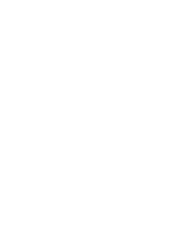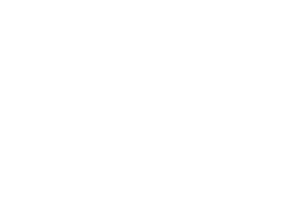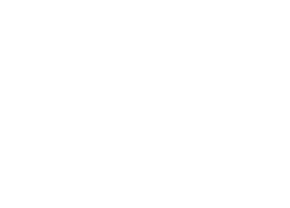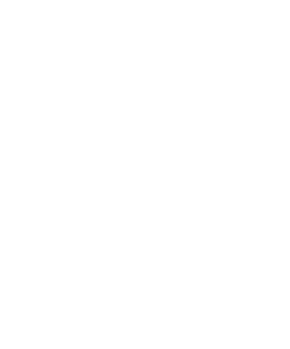 |
 |
 |

|
Rebecca Horn, German (b. 1944), Unicorn, 1971, from the portfolio Performance Edition, printed 2000. Gelatin silver print. Harvard Art Museums/Busch-Reisinger Museum, Gift of the artist, 2014.291. © Rebecca Horn / Artists Rights Society (ARS), New York / VG Bild-Kunst, Bonn. Photo: Achim Thode.
|
|
 |
REBECCA HORN: “WORK IN PROGRESS”
16/11/2014-10/5/2015
Harvard Art Museums Commission Site-Specific Installation by Rebecca Horn, in Conjunction with Special Exhibition Rebecca Horn: “Work in Progress”
Harvard Art Museums’ new Art in Public Spaces initiative features works from sixth century to present, including Horn commission and multimedia installation by Ai Weiwei
Renovated and expanded facility to open November 16, 2014,
uniting Fogg Museum, Busch-Reisinger Museum, and Arthur M. Sackler Museum
|

|
Posted 13 January 2015
|
Share this:
|
|
The Harvard Art Museums announced today an additional inaugural special exhibition that will be on view in the museums’ newly renovated and expanded facility, opening November 16, 2014. Rebecca Page 2 of 6 October 29, 2014
Horn: “Work in Progress” features a select group of the artist’s multiples, photographs, and early films, on view through May 10, 2015, in the museums’ new University Research Gallery. In conjunction with the exhibition, a specially commissioned kinetic sculpture, Flying Books under Black Rain Painting (2014), will be installed inside the museums’ new Prescott Street entrance. The sculpture, also known as a “painting machine,” will be on long-term display as part of the museums’ Art in Public Spaces initiative. This new program showcases works of art in and around the Calderwood Courtyard at the center of the new museums’ facility, as well as select other spaces throughout the museums, expanding the experience of art beyond gallery walls and into the museums’ spaces that are open to the entire community without the purchase of gallery admission. Additionally, the museums will offer a public program of Horn’s films in Menschel Hall, a new 300-seat lecture hall for presentations, screenings, performances, and other special events.
|
|
|
|

|

|

|

Rebecca Horn, German (b. 1944), Scratching both walls at once, still from Berlin Exercises: Dreaming under water of things afar (1974/75, color and sound, 16 mm in DVD projection; 42 min.). Harvard Art Museums/Busch-Reisinger Museum, Purchase in memory of Eda K. Loeb, 2014.199.4. © Rebecca Horn / Artists Rights Society (ARS), New York / VG Bild-Kunst, Bonn. Photo: Helmut Wietz.
|
|
Rebecca Horn (German, b. 1944) is an internationally recognized contemporary artist, best known for her multimedia approach to art making. Her artistic production encompasses drawing, performances, readymade and often kinetic sculptures, installations, artist books, and films. Just as the site-specific installation derives from her early performances and sculptural installations, Horn’s art can best be understood as a “work in progress,” an oeuvre constantly building on itself and drawing from earlier inspiration and production. As the artist noted in 1991, “It all interlocks.” The Harvard Art Museums exhibition explores this aspect of Horn’s art, drawing entirely on recent acquisitions by the Busch-Reisinger Museum, many of which are gifts of the artist.
|
|
|
|
|

|

|

|
“Singular and surprising experiences with works of art can create a kind of contagion of curiosity among visitors,” said Deborah Martin Kao, Chief Curator, Acting Head, Division of Modern and Contemporary Art, and the Richard L. Menschel Curator of Photography at the Harvard Art Museums. “We hope that encounters with Rebecca Horn’s dynamic work at the Prescott Street entrance will lead visitors both to Page 3 of 6 October 29, 2014
explore connected works in the galleries and to utilize the powerful new platforms for teaching, research, and learning throughout the new facility, from the Materials Lab to the Art Study Center.”
“This presentation of Rebecca Horn’s works aligns well with the interests of the museums’ diverse teaching and learning program and illustrates particular strengths of the Busch-Reisinger collection as well as those of the museums as a whole,” said Lynette Roth, the Daimler-Benz Associate Curator of the Busch-Reisinger Museum and curator of the “Work in Progress” exhibition. “Horn’s work touches on issues of movement and the readymade that were raised by the historic avant-garde, as well as on the role of multiples, the body, performance, and artwork that was explored through different media in the postwar period. We look forward not only to showing film in the gallery, but to including film screenings in the lecture hall as part of our presentation of Horn’s work, as these are key to her artistic production.”
|
|

Rebecca Horn, German (b. 1944), Pencil Mask, 1972, still from Performances 2 (1973, color and sound, 16 mm in DVD projection; 38 min.). Harvard Art Museums/Busch-Reisinger Museum, Purchase in memory of Eda K. Loeb, 2014.199.3. © Rebecca Horn / Artists Rights Society (ARS), New York / VG Bild-Kunst, Bonn.
|
|
|
|

|

|

|

Rebecca Horn, German (b. 1944), Finger Gloves, 1972, from the portfolio Performance Edition, printed 2000. Gelatin silver print. Harvard Art Museums/Busch-Reisinger Museum, Gift of the artist, 2014.285. © Rebecca Horn / Artists Rights Society (ARS), New York / VG Bild-Kunst, Bonn. Photo: Achim Thode.
|
|
Rebecca Horn: “Work In Progress” Works on View
Five multiples, or editioned artworks, dating from the 1970s through the 1990s are installed in cases designed by Horn. Six black-and-white photographs, from the portfolio Performance Edition (printed 2000), depict the artist’s early performances from 1971 and 1972. Two film groupings combined into one continuous loop are projected life-size onto the gallery wall. Performances 2 (1973, color and sound, 16 mm in DVD projection; 38 min.) portrays, in a largely documentary function, the artist’s “personal art” performances, in which she constructed wearable sculptures, or “body extensions,” for herself and her collaborators. These performances are also captured in the Performance Edition photographs. Berlin Exercises: Dreaming under water of things afar (1974/75, color and sound, 16 mm in DVD projection; 42 min.), which the artist refers to as her first film, presents distinct performances in the proscribed space of the artist’s studio over a predetermined period of time.
In conjunction with the exhibition, the museums will offer a program of Horn’s full-length feature films throughout the duration of the exhibition. The Gigolo (Der Eintänzer) (1978), Buster’s Bedroom (1990), Moon Mirror Journey (2011), and her earliest films from 1970–72 (Performances 1) will be shown in Menschel Hall on Sunday afternoons. The films are free with the price of museums admission.
Credits
|
|
|
|
|
|
The commission and acquisition of the installation of Flying Books under Black Rain Painting was funded by the German Friends of the Busch-Reisinger Museum and the Frances H. Burr Memorial Fund. The exhibition Rebecca Horn: “Work in Progress” and the installation of Flying Books under Black Rain Painting were funded by the Charles L. Kuhn Endowment Fund. The purchase of the films was funded through the Eda K. Loeb Endowment Fund. Harvard Art Museums are made possible in part by generous support from the Emily Rauh Pulitzer and Joseph Pulitzer, Jr., Fund for Modern and Contemporary Art.
Art in Public Spaces
The Harvard Art Museums’ newly restored Calderwood Courtyard and select other spaces throughout the museums’ facility are open to the public and accessible without the purchase of gallery admission. In these spaces, the inaugural Art in Public Spaces installation includes works from across centuries and around the world.
Horn’s kinetic sculpture will be prominently placed opposite a work by the Chinese artist and activist Ai Weiwei (b. 1957). Titled 258 Fake (2011), the installation is comprised of 7,677 digital photographs by the artist divided into themes, running on loops and displayed on 12 monitors. Many of the photographs were originally featured on the artist’s popular blog from 2003 through 2011, before it was shut down by the Chinese government.
These large-scale contemporary works, along with an LED sign by American artist Jenny Holzer, Untitled (C-4), 1990, were chosen for installation with consideration of the architecture of the space. The Art in Public Spaces initiative—together with recent acquisitions of works by artists such as Claude Cahun and Marcel Moore, Max Ernst, Felix Gonzalez-Torres, K. O. Götz, Jesse Aron Green, Mona Hatoum, Lorraine O’Grady, Nam June Paik, Charlotte Posenenske, Kurt Schwitters, and David Alfaro Siqueiros—emphasizes the museums’ increased focus on strengthening its modern and contemporary collections.
Also installed around three arcades of the Calderwood Courtyard are eight 12th-century Romanesque limestone capitals from Moutiers-Saint-Jean, France, and the Abbey of Santa María de Lebanza, Spain—all from the collection of the Fogg Museum. These are juxtaposed with Ernst Barlach’s ceramic Crippled Beggar (1930), from the collection of the Busch-Reisinger Museum, and a 6th-century limestone Chinese Head from a Column Support in the Form of a Beast, from the collection of the Arthur M. Sackler Museum. Like Rebecca Horn’s and Ai Weiwei’s work, the sculptures in the courtyard visually represent the distinct identities of the three museums and evoke a symbolic knitting together of them under one roof.
About the Renovation and Expansion
Renzo Piano Building Workshop’s design sensitively preserves the original 1927 building, including its historic facade on Quincy Street and the iconic interior Calderwood Courtyard. A new addition was Page 5 of 6 October 29, 2014
constructed along Prescott Street, and a new glass roof allows controlled natural light to filter into the museums’ conservation labs and the Art Study Center, as well as into the central courtyard below. The renovation and expansion was designed to unite the Fogg, Busch-Reisinger, and Arthur M. Sackler Museums and their collections together in one facility; to minimize impact on the historic structure; to add a new, distinct architectural expression; and to create a dialogue with the residential neighborhood and the adjacent Carpenter Center for the Visual Arts, the only building in North America designed by architect Le Corbusier. Construction on the exterior of the new 204,000-square-foot facility, begun in January 2010, is now complete. The project is designed to follow Harvard University’s sustainability initiatives, with the intention of attaining LEED Gold certification. The renovation and expansion increases the Harvard Art Museums’ gallery space by more than 40 percent; the addition of 12,000 square feet brings the total exhibition space to 43,000 square feet.
About the Harvard Art Museums
The Harvard Art Museums, among the world’s leading art institutions, comprise three museums (the Fogg, Busch-Reisinger, and Arthur M. Sackler Museums) and four research centers (the Straus Center for Conservation and Technical Studies, the Center for the Technical Study of Modern Art, the Harvard Art Museums Archives, and the Archaeological Exploration of Sardis). The Fogg Museum includes Western art from the Middle Ages to the present; the Busch-Reisinger Museum is dedicated to the study of art from the German-speaking countries of central and northern Europe, and is the only museum of its kind in North America; and the Arthur M. Sackler Museum is focused on Asian, ancient, and Islamic and later Indian art. Together, the collections include approximately 250,000 objects in all media. The Harvard Art Museums are distinguished by the range and depth of their collections, their groundbreaking exhibitions, and the original research of their staff. Integral to Harvard University and the wider community, the museums and research centers serve as resources for students, scholars, and the public. For more than a century they have been the nation’s premier training ground for museum professionals and are renowned for their seminal role in developing the discipline of art history in the United States.
Harvard Art Museums
32 Quincy Street
Cambridge, MA 02138
http://www.harvardartmuseums.org
|
|
|

|

|

|

|

|
|
|
Rebecca Horn, German (b. 1944), Black Cockfeathers, 1971, from the portfolio Performance Edition, printed 2000. Gelatin silver print. Harvard Art Museums/Busch-Reisinger Museum, Gift of the artist, 2014.287. © Rebecca Horn / Artists Rights Society (ARS), New York / VG Bild-Kunst, Bonn. Photo: Achim Thode.
|
|
|
|
|
Rebecca Horn, German (b. 1944), Head Extension, 1972, still from Performances 2 (1973, color and sound, 16 mm in DVD projection; 38 min.). Harvard Art Museums/Busch-Reisinger Museum, Purchase in memory of Eda K. Loeb, 2014.199.3. © Rebecca Horn / Artists Rights Society (ARS), New York / VG Bild-Kunst, Bonn.
|
|
|
|
|
Rebecca Horn, German (b. 1944), The Doppelgänger, 1987. Hammer and cardboard box. Edition XIV/XX HC113. Harvard Art Museums/Busch-Reisinger Museum, Gift of the artist, 2014.283. © Rebecca Horn / Artists Rights Society (ARS), New York / VG Bild-Kunst, Bonn.
|
|
|
|
|
|


